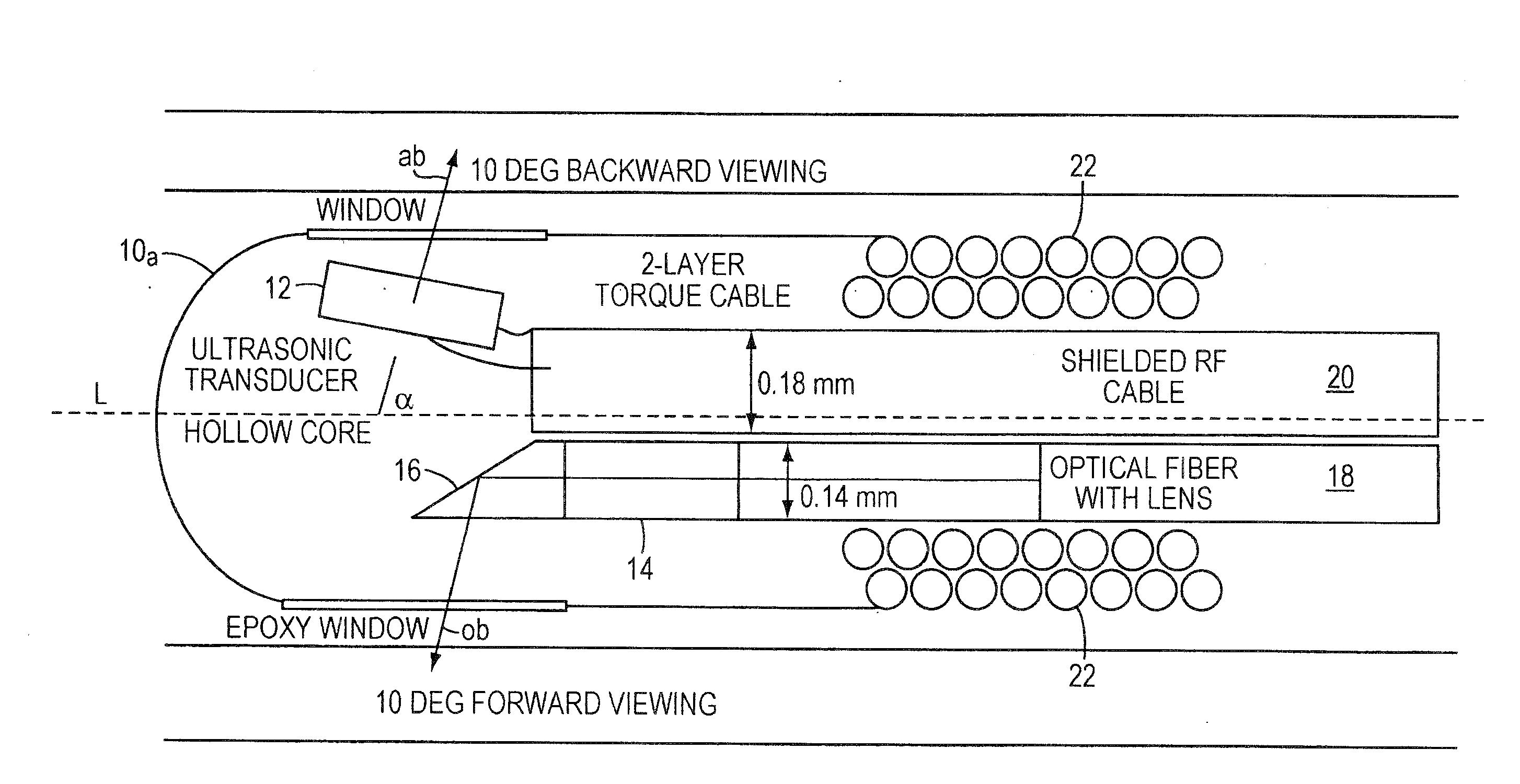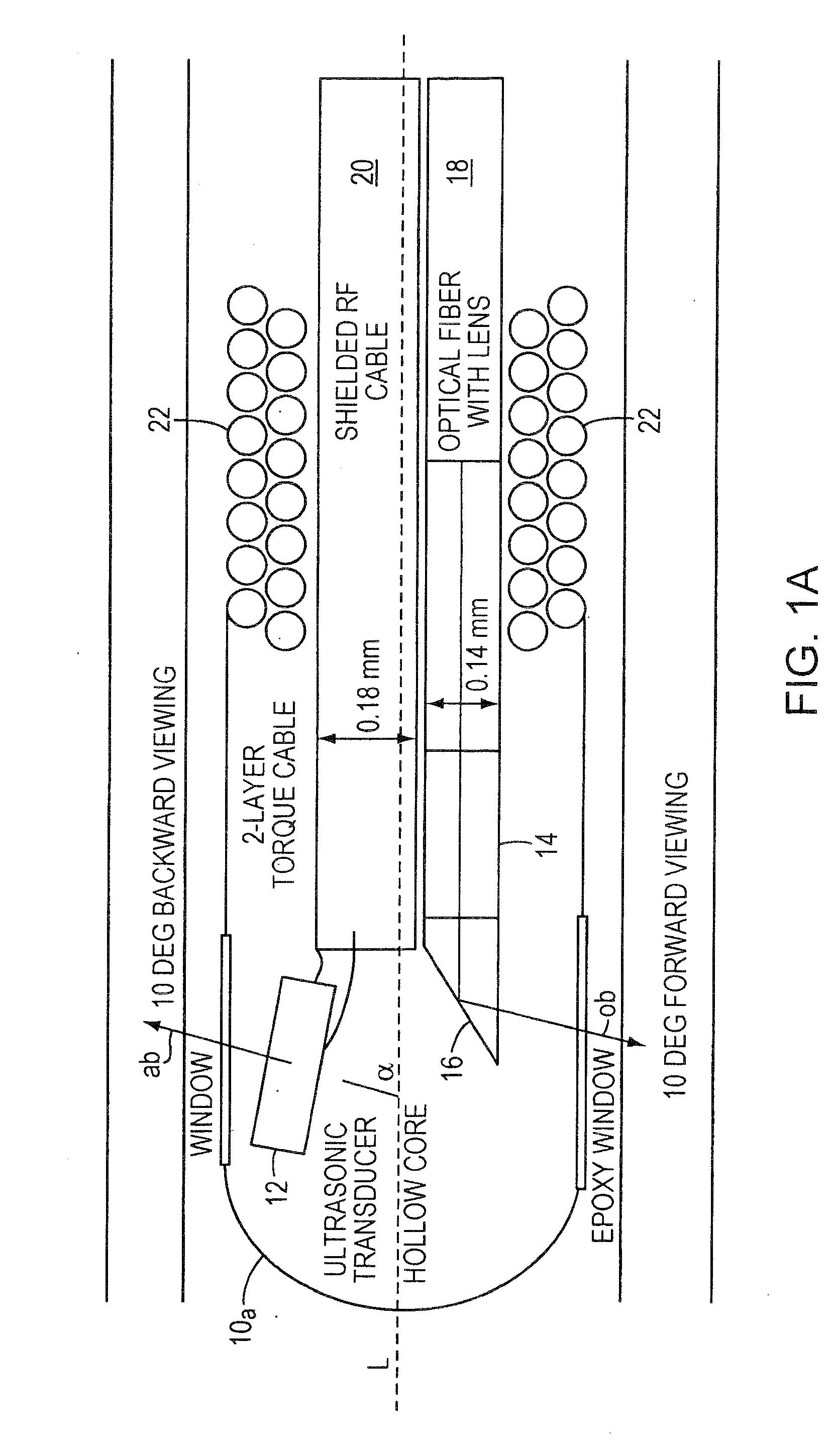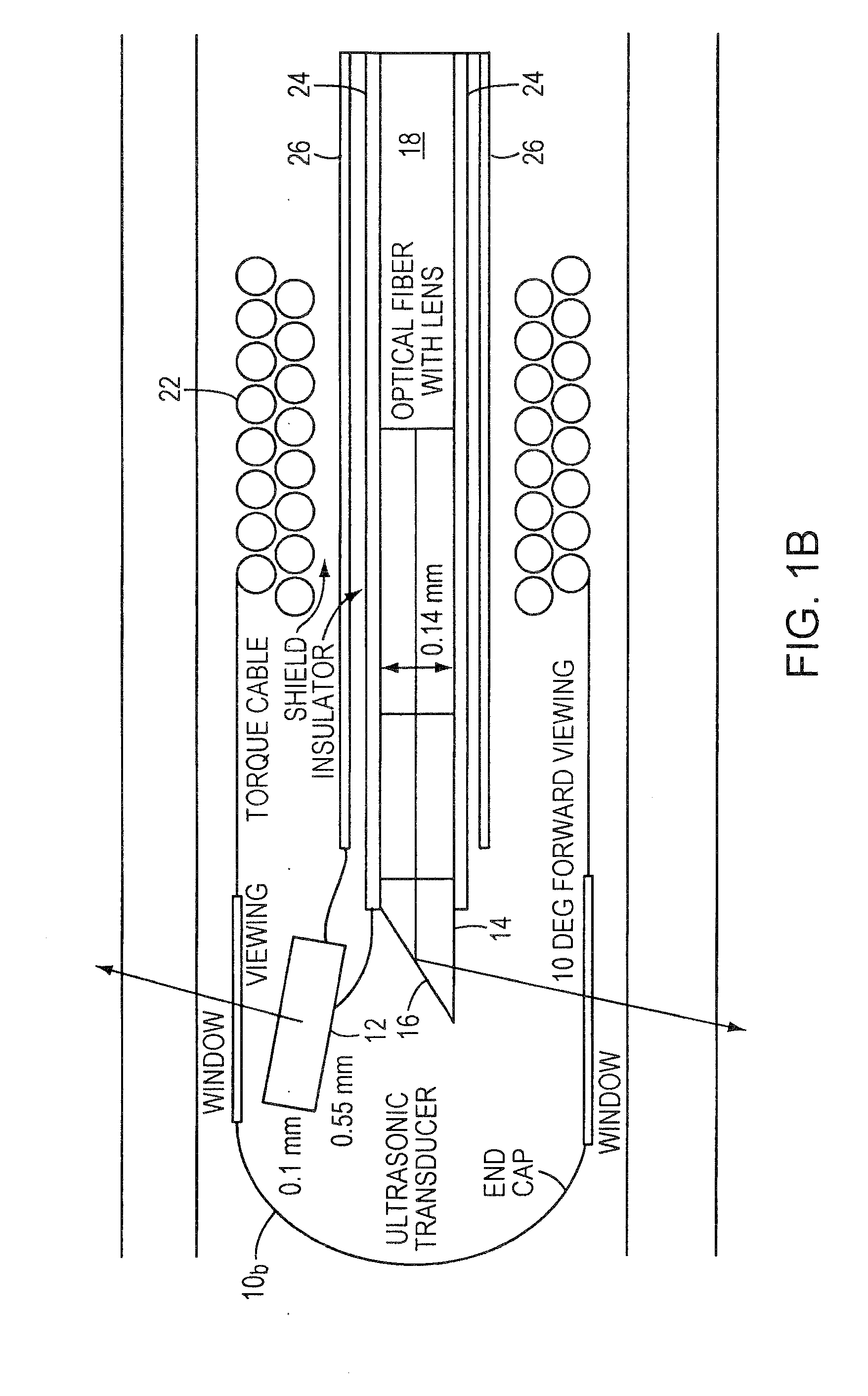Opto-Acoustic Imaging Devices and Methods
a technology of optical acoustic imaging and optical probe, which is applied in the field of optical imaging, can solve the problems of increased risk of ami and insufficient co-registration level of combined catheters, and achieve the effects of saving valuable space within the catheter body, facilitating proper co-registration, and high precision
- Summary
- Abstract
- Description
- Claims
- Application Information
AI Technical Summary
Benefits of technology
Problems solved by technology
Method used
Image
Examples
Embodiment Construction
The following description refers to the accompanying drawings that illustrate certain embodiments of the present invention. Other embodiments are possible and modifications may be made to the embodiments without departing from the spirit and scope of the invention. Therefore, the following detailed description is not meant to limit the present invention. Rather, the scope of the present invention is defined by the appended claims.
It should be understood that the order of the steps of the methods of the invention is immaterial so long as the invention remains operable. Moreover, two or more steps may be conducted simultaneously or in a different order than recited herein unless otherwise specified.
FIG. 1A illustrates a portion of an imaging probe 10a, using a conventional IVUS ultrasonic transducer 12, an optical transducer 14 which includes an angled-tip optical lens assembly 16 attached to a single mode fiber 18, a standard miniature RF cable 20 delivering power to the IVUS ultraso...
PUM
 Login to View More
Login to View More Abstract
Description
Claims
Application Information
 Login to View More
Login to View More - R&D
- Intellectual Property
- Life Sciences
- Materials
- Tech Scout
- Unparalleled Data Quality
- Higher Quality Content
- 60% Fewer Hallucinations
Browse by: Latest US Patents, China's latest patents, Technical Efficacy Thesaurus, Application Domain, Technology Topic, Popular Technical Reports.
© 2025 PatSnap. All rights reserved.Legal|Privacy policy|Modern Slavery Act Transparency Statement|Sitemap|About US| Contact US: help@patsnap.com



